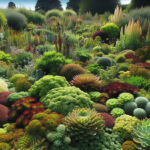Introducing Angelina Sedum: A Plant Profile
When it comes to hardy plants that liven up landscapes with minimal fuss, Sedum rupestre ‘Angelina’ emerges as a spirited contender. This vivacious succulent is not only a visual delight but also an embodiment of resilience. Imagine a green carpet that transforms into an astonishing gold hue when kissed by the sun – that’s Angelina for you. But don’t let its beauty be the only takeaway; this little trooper’s drought tolerance makes it an eco-friendly champion in gardens around the globe.
The versatility of Angelina sedum is exemplified by its ability to thrive in a variety of harsh conditions. From the rock gardens of amateurs to the sprawling landscapes of professionals, Angelina sedum dots gardens with its spirited clumps, inviting butterflies and bees to partake in its splendor. Whether it’s used as a robust ground cover or a whimsical addition to a container garden, this plucky plant is a testament to nature’s adaptability.
Integrated into sustainable gardening practices, Angelina sedum demonstrates how functionality and aesthetics can go hand-in-hand. Beyond its attributes as a hardy ground hugger, it serves an essential role in erosion control, making it an unsung hero in conserving the topsoil. Gardeners are continually finding creative ways to embed this hardy sedum into their landscape designs, proving that practicality does not have to come at the expense of charm.
Without further ado, let’s dive into a visual journey showcasing the allure and versatility of the Angelina sedum. This informative video highlights why this hardy succulent is a must-have for any robust garden.
In the grand tapestry of gardening, Angelina sedum threads a tale of vibrancy and tenacity. A beacon of low-maintenance landscaping, it encourages eco-conscious gardeners to aspire for beauty without bondage. So, the next time you spot this golden gem, remember that it’s more than just a pretty face; it’s a powerhouse of pragmatism, woven intricately into the very fabric of environmental stewardship.
The Spread of Sedum: Understanding ‘Invasive’ in a Horticultural Context
Have you ever witnessed a plant that just knows how to claim its space, seemingly spreading its green tapestry across the garden floor without a hint of shyness? That’s Angelina sedum for you—a strong-willed, mat-forming charmer that raises the question, “Is Angelina sedum invasive?” Well, let’s dig a little deeper and see what that term really means in our green world.
In horticulture, labeling a plant ‘invasive’ can sometimes be as controversial as a yellowjacket at a picnic. But let’s clear the air: ‘invasive’ typically denotes a species that spreads aggressively, often at the detriment of native flora and planned landscapes. Angelina sedum, while fast-growing, is more of a garden guest that doesn’t overstay its welcome if monitored closely. Picture it as that friend who brings life to the party but knows when it’s time to go home.
Now, think of Angelina sedum as the spirited artist of the plant world, painting swaths of bright yellow-green across your garden canvas. It’s not looking to overshadow its neighbors; it’s just very, very enthusiastic about filling in any bare spots with its succulent leaves. Sure, Angelina sedum can spread quickly in favorable conditions, but with prudent care and maintenance, this vivacious groundcover can be more of a joyful symphony than a chaotic cacophony in your garden arrangement.
Oftentimes, gardeners might worry about a resilient plant like Angelina sedum taking over their garden tapestry. But with a bit of elbow grease and seasonal care tips, you can keep this energetic perennial in check—allowing it to brighten your garden without going full conquest. It’s about balance, harmony, and enjoying the vibrant hues of Angelina sedum, fully aware that with the right steps, it need not be a botanic bully.
To really understand the spread of Angelina sedum in context, let’s take a visual detour. Check out this enlightening video, featuring Angelina sedum and its peers in the plant kingdom, and discern for yourself its true nature.
Angelina sedum’s knack for robust, independent growth can certainly be an asset, especially for those embarking on the horticultural adventure with maybe a little more enthusiasm than expertise! What better starter companion than a plant that fills your garden with easygoing charm without needing the pampering of a prize rose?
Ultimately, as we navigate the nuances of ‘invasive’ versus ‘enthusiastic’ plant behavior, let’s appreciate Angelina sedum’s role. It may be a bit keen, but with a touch of gardening wisdom and routine oversight, we can enjoy its sea of sunny foliage—adding just the right touch of drama to the story of our gardens without letting it become the sole protagonist.
Angelina Sedum in Different Ecosystems: Friend or Foe?
When we talk about the architectural marvels in the garden, Angelina sedum undoubtedly steals the show. But does this showstopper have a darker side? As we traverse from backyard gardens to vast wildlands, the adaptability of Angelina sedum might be too much of a good thing, edging out native species in an impressive yet worrisome botanical coup.
In the suburban oasis, Angelina sedum is often the emerald jewel of rockeries and xeriscapes, celebrated for its drought tolerance and vibrant hues. It’s in these controlled settings that the sedum shines without overshadowing. However, venture into more natural ecosystems, where supervision is less rigorous, and you’ll witness a different dynamic. This rugged survivor spreads its fleshy limbs far and wide, laying claim to territories where once-diverse flora balanced the local habitat.
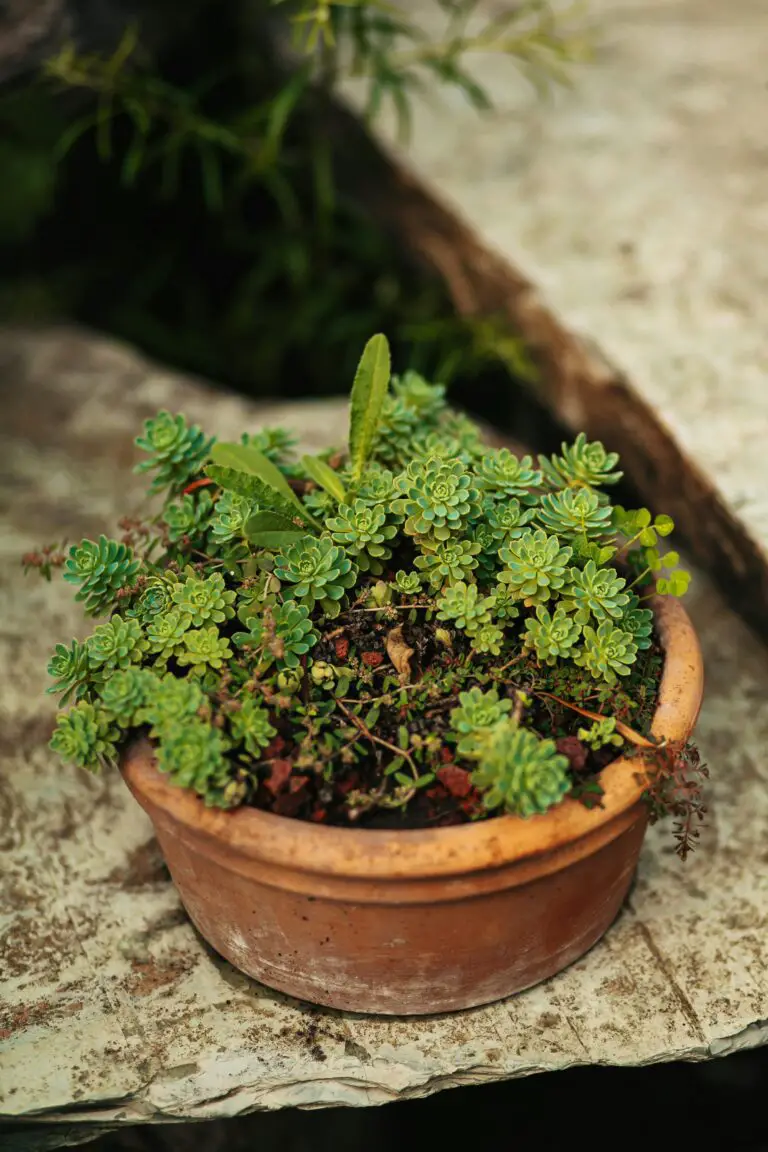
Take, for instance, the dunes and grasslands, where the unchecked proliferation of Angelina sedum constrains the growth of native grasses and wildflowers. Its cascade of yellow blooms—though a visual delight—can create a monoculture, which is akin to rolling out a green carpet that smothers all the understudies yearning for their moment in the sun.
Even in climates less than congenial, this succulent defies the odds. From the humid embrace of the south to the brisk breezes of the north, Angelina sedum adjusts its survival strategy, proving to be as tenacious as it is alluring. It’s this very resilience that stirs unease among conservationists; the plant’s vigor could spell trouble for less robust native species struggling to compete.
So, is Angelina sedum friend or foe? The answer is cloaked in shades of green. In controlled environments, it’s a drought-defying superhero; but when it escapes the confines of cultivation, it can become an ecological rival. The key lies in understanding and managing its growth, ensuring that this stunning sedum can coexist without conquering.
Management Strategies for Angelina Sedum
With its vibrant foliage and robust growing habits, Angelina sedum can be both a blessing and a curse for garden lovers. Sure, it’s lovely to look at, but when Angelina sedum stages a backyard takeover, it’s time to arm yourself with knowledge and tackle the situation head-on. Let’s dive into some tried-and-true tactics to keep your garden’s vivacious invader in check.
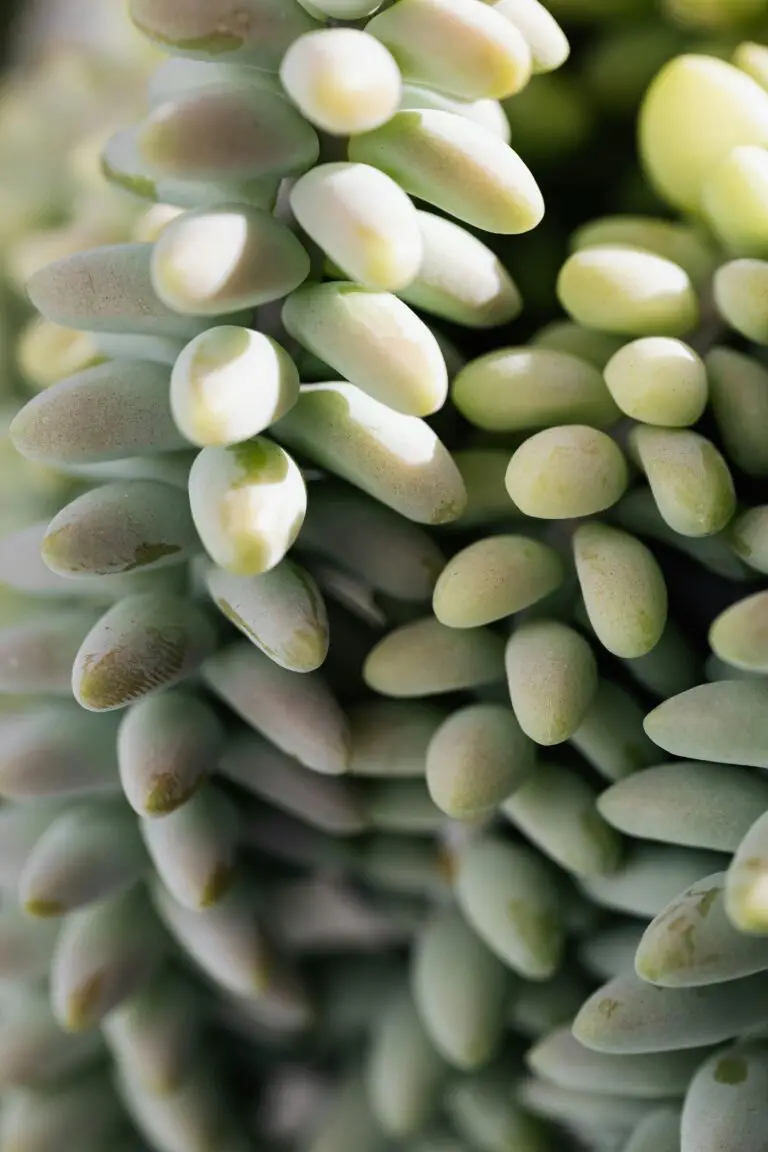
Containment is Key: Start by setting physical boundaries. Use garden edging tools to define clear borders for your Angelina sedum. Think of it as giving your plant a “playground” where it can frolic freely—without encroaching on other plant pals. Materials like metal edging, stone barriers, or even embedding shallow pots can work wonders.
Selective Pruning: Regular pruning isn’t just for aesthetics; it’s a strategic move. As summer wanes, give your Angelina sedum a good haircut—trimming off any straying shoots that seem keen on exploring new territories. This will not only neaten things up but also reduce the chances of rogue pieces taking root where you don’t want them.
Rogue Runners: Sometimes, you might find adventurous offshoots that have escaped containment. When you spot these little vagabonds, show no mercy—pluck them out promptly. It’s like playing “Whack-a-Mole” with plants, and trust me, diligence pays off. You don’t want to find your footpath suddenly sprouting a verdant carpet, do you?
Eradication Efforts: If Angelina sedum has already claimed a sizable chunk of your garden, you might need to take a tougher stance. Here’s where you roll up your sleeves and get digging. Remove the plant, ensuring you’re taking out the roots as well. Miss a piece, and it’ll be back like a botanical boomerang. After removal, consider covering the area with a thick layer of mulch or even a ground cover fabric to dissuade any potential return.
Remember, Angelina sedum might be a tad overzealous in its quest to spread, but with these strategies, you’ll be the one spreading the news of your gardening victories instead. Happy gardening!
Alternative Groundcovers: Ecologically Sound Choices
When it comes to gardening, the term “invasive” can send shivers down the spine of any eco-conscious plant lover. Angelina Sedum, for instance, may have a reputation for elbowing out the locals in some regions. But fear not, fellow green-thumbs! Mother Nature has blessed us with a cornucopia of groundcover options that are both eco-friendly and stunning to look at.
Imagine a lush carpet of creeping thyme, its tiny, fragrant leaves a playground for native bees and butterflies. Or consider the resilient native ferns that unfurl their fronds like green flags, signaling a win for biodiversity. These choices aren’t just good for the soul; they work wonders for your local environment.

Consider the case of the eager homeowner who replaced their turf with a low-growing buffalo grass. Not only did they slash their water bill, but they also created a sanctuary for local wildlife. A high five for sustainability! Or the community garden that scattered wildflower seeds and watched in delight as the area transformed into a buzzing hotspot for pollinators.
Opting for alternative groundcovers isn’t just a nod to Mother Nature; it’s a full-blown embrace. You can enjoy the functional and aesthetic perks similar to Angelina sedum, all while ensuring your garden is contributing to the local ecosystem rather than competing with it. Take a walk on the sustainable side—it’s worth every step.
Impact on Biodiversity: A Closer Look at Angelina Sedum
When pondering the effects of Angelina sedum on our ecosystem, the word ‘invasive’ often springs to mind, but is this hardy succulent truly a green menace? Envision your local park or backyard thriving with a variety of flora, from majestic oaks to colorful wildflowers. Now, imagine Angelina sedum, its bright yellow tendrils spreading rapidly, creeping in and dominating this diverse tapestry. One can’t help but wonder: what happens to the multitude of species that once called this place home?
Picture a patch of Angelina sedum as an ecological game of king of the hill, where this plucky plant is often the one wearing the crown. It’s not just about being competitive; it’s the ability to thrive almost anywhere, which can lead to other plants being overshadowed—literally. The dense carpet formed by its growth can limit light for seedlings below, often snuffing out the chance for diversity before it takes root. Studies and green-thumbed experts alike point to evidence where once-varied regions transform into Angelina sedum strongholds, leaving local wildlife scrambling for resources.
Drawing from case studies, consider the outskirts of urban areas where Angelina sedum has been used as an ornamental ground cover. Initially praised for its low maintenance, it’s not long before observers notice a decline in native wildflowers, grasses, and even young trees. The implications? A shrinking buffet for pollinators such as bees and butterflies, which could ripple up through the food chain. Entomologists and botanists provide sobering insights into these changes, revealing the unanticipated consequences of a seemingly benign gardening choice.
What’s more, Angelina sedum’s hardy nature means it doesn’t bat an eye at soil quality or weather extremities. This resilience, while commendable, poses an underlying threat to delicate ecosystems where balance is key. In more pristine natural environments, like woodlands or meadows, the introduction of such an adaptable outsider can spell trouble for species that have coevolved over millennia, delicately calibrating their existence to the rhythm of these habitats.
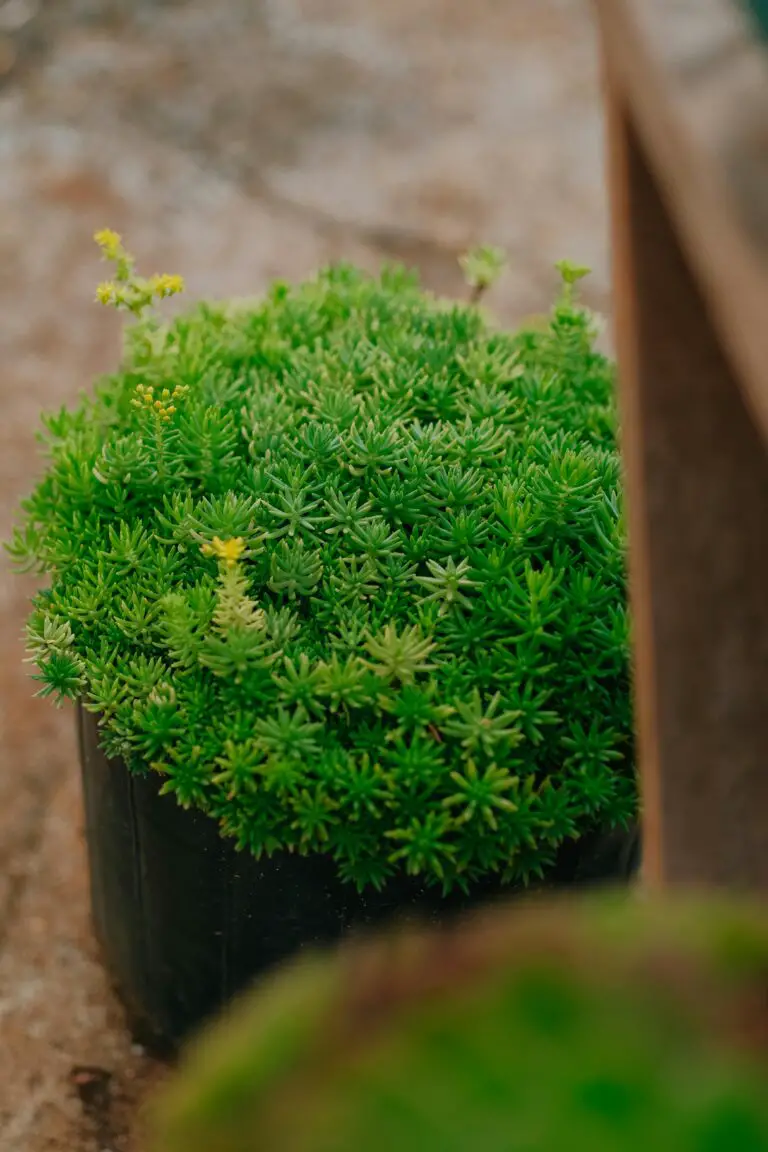
Yet, not all ecosystems buckle under the conquest of Angelina sedum; some adapt, or in rare cases, even benefit from new ground cover that can protect against soil erosion. In these contexts, Angelina sedum can actually become a helpful ally. This variation in outcomes is a powerful reminder that the term ‘invasive’ isn’t a one-size-fits-all label. It calls for a nuanced understanding of each unique ecosystem—nature is nothing if not complex.
In the end, as cultivators of our environment, it falls upon us to examine the ripple effects of our planting decisions. With mindful consideration and guidance from biodiversity experts, we can navigate the delicate balance between aesthetic appeal and ecological responsibility. The story of Angelina sedum in our backyards and beyond is a captivating chapter in the ever-unfolding narrative of human interaction with nature. Let’s write it with both the pen of curiosity and the ink of wisdom.
Expert Insights: What Gardeners and Ecologists Say
When it comes to Angelina sedum, opinions among those with green thumbs and data-driven ecologists often differ. This succulent plant, known for its vibrant hues and hardy nature, has sparked a debate on its role in our gardens and ecosystems. Let’s delve into the collective wisdom and concerns that these two groups bring to the table.
On the one hand, many gardeners sing praises for Angelina sedum’s easy-to-care-for personality. Its ability to thrive with minimal water and withstand a variety of weather conditions makes it a favorite amongst drought-tolerant plant enthusiasts. Take, for example, Sarah, a hobbyist gardener from the arid regions of Arizona, who found that her “yard was transformed by its teal tendrils that require almost no attention!”

However, scratch the surface, and the ecologists’ perspective casts a shadow of doubt over this sunny disposition. Research points to Angelina sedum’s aggressive growth patterns, which can sometimes lead to native species being crowded out. Dr. Liam F, an ecologist specializing in plant invasiveness, explains that “while Angelina sedum might not be a problem in contained spaces, it’s in the natural wild where its invasive potential often goes unchecked.”
It’s like walking a botanical tightrope—balancing between the joy of virtually indestructible ground cover and the fear of inadvertently stifaring biodiversity. Kim, a gardener-turned-native-plant-advocate from the Pacific Northwest, learned this the hard way. “I was thrilled with how quickly it covered the rocky slopes in my garden, but then I noticed it started to invade the nearby forest floor, outcompeting the trilliums and ferns.”
Whether a steadfast ally in the war against barren patches in your garden or an ecological usurper, Angelina sedum does not leave anyone indifferent. As we navigate its invasiveness, this hardy plant continues to challenge our green ideologies, reminding us that with great planting power comes great responsibility.
Angelina Sedum Legal Status: Regulations to Consider
When it comes to the vibrant Angelina sedum, garden enthusiasts won’t be able to resist its alluring chartreuse hues and mat-forming allure. But before you go turning your backyard into an Angelina paradise, you might want to hit the brakes for just a second and tune in to the regulatory symphony surrounding this vigorous plant.
Yes, Angelina sedum has sparked conversations among the green-thumbed law-makers. Depending on where you set your shovel, there could be a mix of praise or furrowed brows. In some regions, this succulent is just another face in the crowd, while in others, it’s got a reputation for pushing the boundaries of personal space in the plant community, earning its label as potentially invasive.
In fact, let’s talk about that one time in Hometownville (fictional, of course), where the local park was overtaken by Angelina’s army. The overly enthusiastic spreading of this groundcover had council members scratching their heads, wondering if they needed to draft up some plant patrolling policies. Fast forward a few years, and there’s now an entire chapter in the Hometownville Horticultural Handbook dedicated to the do’s and don’ts of planting Angelina sedum!
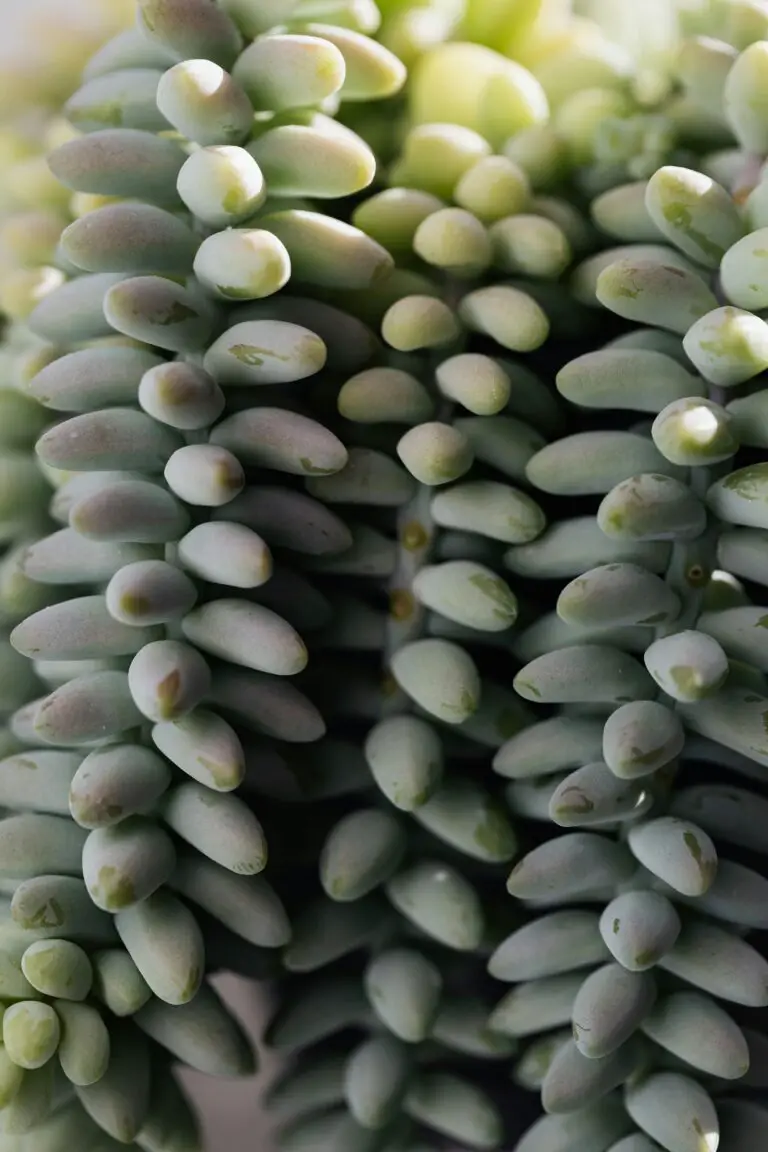
Not far off in Nearbytown (also fictional), similar scenes unfolded. The plant spread like wildfire, making it onto the “banned botanicals” list. The local garden club even staged a “Sedum Send-Off” event to educate gardeners about non-invasive alternatives. It turned out to be a hit, with plant swaps and laughter, proving that sometimes, the garden path does indeed bend toward environmental responsibility.
On the flip side, some regions have embraced Angelina sedum with open arms. There, it’s seen as a drought-tolerant hero that stares down water restrictions and laughs. These areas may not see the plant as a threat, but rather, an asset to xeriscaping practices that champion water conservation. Nevertheless, it’s always best to consult with the local extension office or horticultural society to make sure you’re on the right side of the garden fence, both legally and environmentally.
In conclusion—wait, we said no conclusions! So instead, let’s leave on this note: Keep your gardening gloves in tune with the ecological and legal notes of your locale. Check your local regulations on Angelina sedum. Ensure that your gardening practices strike a chord with the environment and your community. That way, you can plant with peace of mind and a clean (green) conscience.
Frequently Asked Questions
Does the lush Angelina sedum in your garden seem to be hogging all the spotlight? It’s not uncommon to see this hardy plant spreading its vibrant, needle-like leaves far and wide, but does that mean it’s an invasive bully? Understanding what “invasive” truly means is the first step in decoding the mystery of Angelina sedum invasiveness. Let’s get into the nitty-gritty of what this plant can do.
Is Angelina Sedum Really Invasive?
Picture this: A cascading sea of golden-yellow that flourishes without much fuss, Angelina sedum seems like the perfect ground cover. But can too much of a good thing be bad? In some areas, especially where it’s not a native species, Angelina sedum can get a little too comfortable and spread aggressively. This plant’s knack for survival means it could outpace the local flora, potentially causing an ecological eyebrow-raise. It’s not on all the “Most Wanted” invasive plant lists, but in your backyard? It’s worth keeping an eye on.
Keeping Angelina Sedum in Check
So you’ve noticed your Angelina sedum’s sprawling tendencies, and now you’re equipped with garden shears, ready to set some boundaries. Remember, it’s all about control; regular pruning can prevent your sedum from staging a garden takeover. Keep it contained to its designated area, and you’ll maintain both biodiversity and your sanity. Plus, you’ll avoid giving your other garden residents a run for their nutrients.
Alternatives to Angelina Sedum
Maybe you’re rethinking your relationship with Angelina sedum and are on the hunt for a plant that plays better with others. Worry not, there’s a plethora of ground covers that are just as attractive but with less domineering vibes. From the charming, dainty blooms of creeping thyme to the lush, resilient foliage of ground ivy, there’s a kinder companion for your garden—ones that’ll let your other plants shine, too.
The Ecological Impact of Angelina Sedum
When it comes to good garden etiquette, Angelina sedum can be a bit of a gray area. It’s beloved by pollinators and requires minimal care—check and check for eco-friendly gardening. But the flip side? If it edges out native species and upsets the local ecosystem’s apple cart, that’s a mark against it. Keeping a balanced biodiversity is key in any garden—after all, it’s like a little ecosystem all of its own, and every plant plays a part.
Want to see which other ground covers might be secretly plotting world domination, or just get some insights into managing your garden’s vitality? Take a peek at this video for some visual inspiration and tips:
As we’ve seen, Angelina sedum can be both a blessing and a potential curse in your garden oasis. Armed with the right knowledge and tools, you can keep your verdant paradise in harmonious balance, showcasing Angelina sedum’s stunning hues without letting it steal the entire show.

